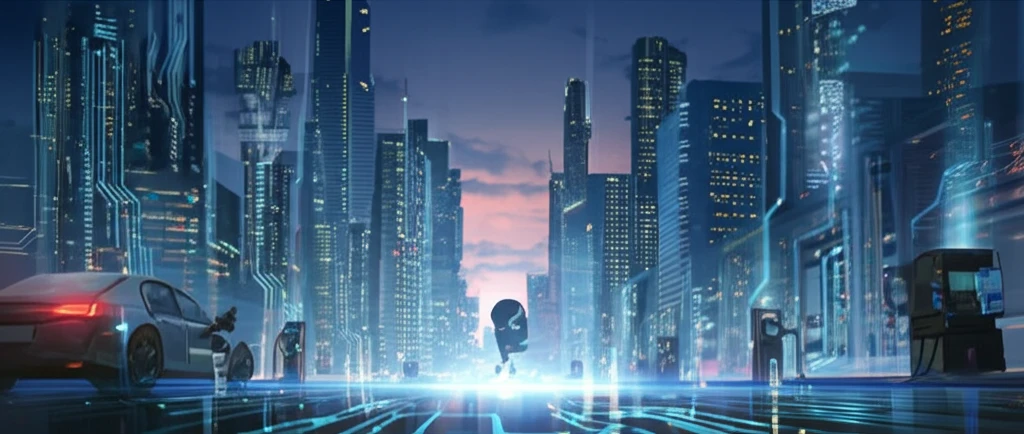
Smart Grid Revolution: How Energy Games Can Power Your Savings
"Unlock the secrets of noncooperative energy charging and discharging games for a smarter, greener, and more affordable future. Explore smart grid technologies and energy optimization strategies."
Imagine a world where your electric vehicle not only gets you from A to B but also actively participates in balancing the energy grid, reducing costs, and promoting sustainability. With the rise of electric vehicles (EVs), our energy distribution systems face unprecedented challenges. However, these challenges also bring unique opportunities. The key lies in smart grid technology and innovative approaches like noncooperative energy charging and discharging games.
The integration of EVs into the power grid presents a dual challenge: the significant new load on the existing energy distribution system and the potential for grid overload during peak hours if EV charging isn't managed effectively. However, the average car spends most of its time parked—often connected to the grid. This idle time can be harnessed to stabilize the grid and reduce energy costs, turning EVs into valuable assets rather than liabilities.
This is where the concept of Vehicle-to-Building (V2B) operation comes into play, allowing EVs to discharge energy back into buildings. V2B not only enhances grid flexibility and reliability but also offers additional benefits to EV owners by reducing their energy expenses.
Decentralized Energy Management: Game Theory to the Rescue

The heart of this innovative approach is a noncooperative game-theoretical framework. In this model, each EV owner acts as an independent player aiming to minimize their energy costs. This decentralized system contrasts with traditional centralized control, where a central authority dictates the charging and discharging schedules of all EVs. By allowing each EV to make its own decisions, the system respects user privacy and reduces the immense signaling required for centralized control.
- Reduced Peak Demand: By strategically managing when EVs charge and discharge, the system minimizes the highest points of energy demand, preventing grid overloads.
- Cost Savings: EV owners can lower their energy bills by participating in V2B operations and responding to energy price signals.
- Enhanced Grid Stability: The ability to discharge energy back into the grid provides a flexible resource that can help stabilize the power supply.
- Privacy Protection: Decentralized systems protect user data by allowing EVs to make independent decisions without sharing private information with a central authority.
The Future of Energy: Smart, Sustainable, and Savings-Oriented
The integration of EVs into smart grids using game-theoretical approaches represents a significant step toward a more sustainable and efficient energy future. By empowering EV owners to actively participate in energy management, we can reduce peak demand, lower energy costs, and enhance grid stability. As technology advances and more EVs hit the road, these strategies will become increasingly important in creating a resilient and cost-effective energy ecosystem.
